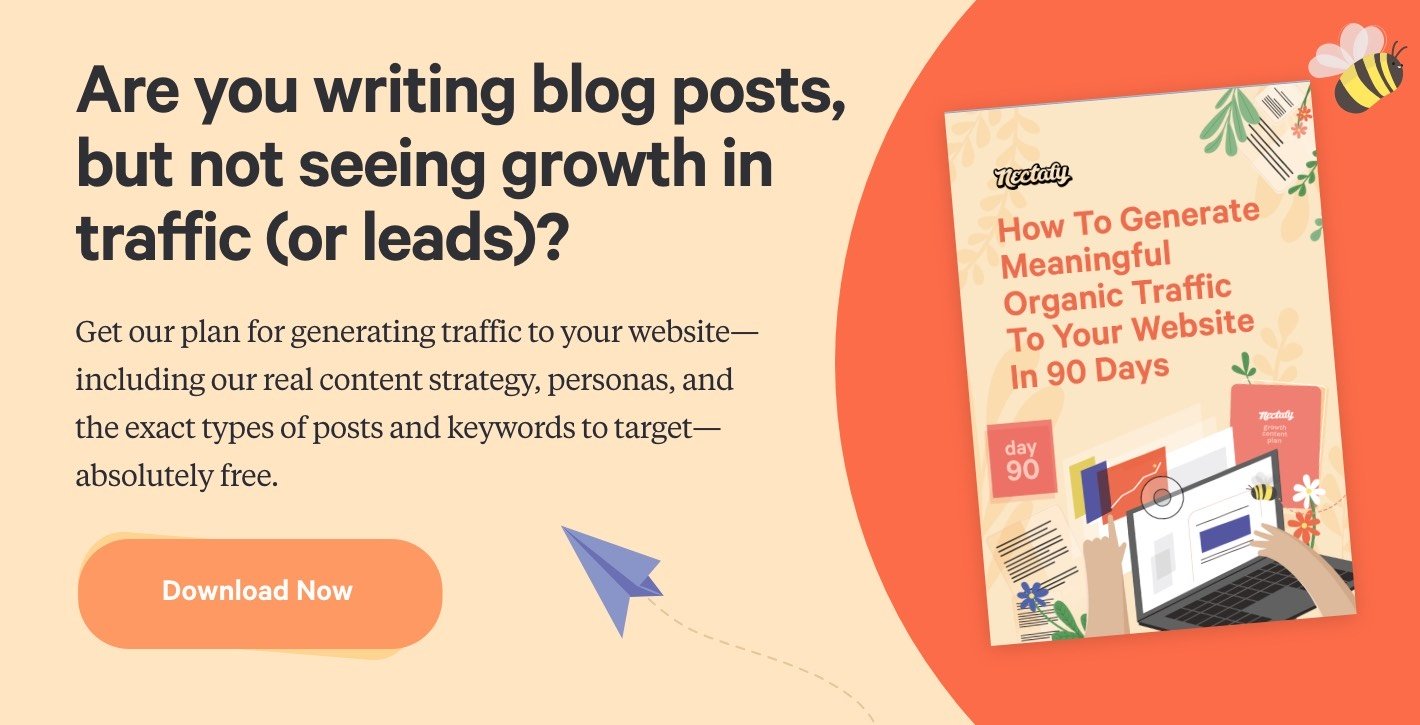Semrush Review: 1 Year, Managing SEO For 20 Websites



Disclosure: We only recommend products we use here at Nectafy. Some of the links in this article are affiliate links that may provide Nectafy with a small commission at no cost to you.
Search engine optimization (SEO) isn’t a magical art—even if it sometimes seems that way. Like any other initiative, a solid SEO strategy requires clear goals, regular analysis, and high-quality tools.
That’s where Semrush comes in. Semrush is an all-in-one SEO suite for researching keywords, analyzing organic traffic, and improving search visibility, and while it has several major competitors, it’s more or less the industry standard for SEO and content marketing.
At Nectafy, we’ve used Semrush to track keyword performance for 20 websites over the past year. The service plays a crucial role in our day-to-day work; previously, we’d used separate tools for tracking performance and researching keywords, and Semrush simplifies our workflow by providing (nearly) everything we need in a single platform.
To get a sense of how Semrush works for SEO (and more importantly, whether it will work for your website), we’ll explain in this Semrush review how we use the platform, and then explore a few of its most useful features.
Semrush Review: Powerful SEO Tools With The Right Strategy
Semrush offers numerous metrics to help you find keywords and track the progress of your campaigns. In fact, the amount of information can be overwhelming, and to use the toolkit effectively, you’ll need to know what each metric offers—and which ones you can safely ignore.
To develop long-term growth content, we focus primarily on keyword difficulty (KD%) and search volume. Semrush provides easy access to this data throughout the platform, and while both metrics are estimates, they’re essential for planning content.
See Also: How To Use Semrush For Keyword Research: 18 Strategies
We use a three-step approach when researching keywords with Semrush. Here’s a simplified summary:
1. Make sure the keyword is appropriate for your target audience.
Semrush can’t tell you whether a keyword is actually relevant to your topic. Before considering a keyword, ask yourself whether visitors would actually search for it. When you’re assessing large lists of keywords from one of Semrush’s keyword tools, it’s easy to skip this step—but it’s extremely important.
For example, if one of our clients is a healthcare recruiting firm, “healthcare jobs” might be an excellent opportunity, but “doctors near me” wouldn’t be relevant to their services.
2. Evaluate the keyword difficulty (KD%).
Semrush’s keyword difficulty metric estimates how much effort you’ll need to take to rank a page in the top 10 results on Google for a specific keyword. KD% is a powerful metric when used consistently, and it’s one of the most valuable resources within the Semrush platform.
Keyword difficulty is ranked on a 1-100 scale. While many factors can affect your site’s chance of ranking for high-difficulty keywords, a simple rule of thumb is to target keywords with keyword difficulties near your domain authority. Your goal is to target keywords that your site could realistically capture.
For example, if your site has a 40 domain authority, you can reasonably assume that you’ll rank for a keyword with a difficulty score of 40—provided that you’re writing high-quality content with the best practices of SEO.
Consider your site’s current performance when researching keywords.Not all businesses should take the same approach to content marketing. If you’re developing organic traffic for a brand-new website, you’ll need a different strategy than a Fortune 500 company with an established search presence. |
3. Prioritize keywords with higher search volume.
Finally, we look at search volume, which estimates monthly organic traffic from Google users. It’s important to remember that the numbers aren’t always accurate, particularly for low-volume keywords. For instance, if you rank in the third position for a keyword with 500 searches per month, you might receive 10% of those clicks—and you may receive additional traffic from related key phrases that you didn’t intend to target.
While volume is an estimate, it’s still useful for planning campaigns that deliver predictable results. If you’re building authority for a small site, use search volume as a guideline—if you’re trying to decide whether to develop content for two keywords with identical KD%, focus on the option with the higher search volume.
Stay focused on the Semrush metrics that help you meet your goals.
Semrush offers various other metrics, and as you proceed through each phase of a growth content strategy, the additional details might become more useful. However, certain metrics can be misleading.
“Visibility,” for example, tracks your overall visibility for the keywords you’ve identified in each campaign. However, if you haven’t chosen your keywords effectively, visibility doesn’t give you an accurate idea of your site’s performance. Likewise, Cost Per Click (CPC) is useful for PPC campaigns, but if you’re not running PPC, it’s not particularly helpful.
What is Semrush search intent?Recently, Semrush added the search intent metric, which attempts to determine whether the audience wants to make a purchase (identified as transactional or commercial intent) or find an answer to a specific question (informational intent). We haven’t had enough time to evaluate whether this metric is accurate, but we’re watching it closely in our campaigns—by understanding audience intent, content creators can optimize pages to improve conversions. |
Semrush: A Powerful (And Potentially Confusing) SEO Toolkit
Now that we’ve outlined a basic strategy, let’s look at a few Semrush tools. This isn’t a comprehensive review—these are the resources that we’ve found most useful over the past year.
Keyword Overview
Keyword Overview enables you to analyze keywords to determine whether they’re worth adding to your campaign. Tracked keywords are displayed in the Position Tracking tab and in various Semrush reports, but you’ll only want to track keywords if they’re beneficial to your website’s long-term growth.
In addition to information about keyword difficulty and search volume, Keyword Overview provides a list of related keywords, keyword variations, and questions that can be useful for content planning. Remember, search engines prioritize semantics—if your content uses several related keywords and answers specific questions about a certain topic, you’ll earn more organic traffic than if you’d simply used the same key phrase over and over again.
Learn more about Keyword Overview.
Keyword Magic
You can find quite a few keyword opportunities through internal discussions (we love a good brainstorm session) or with the Organic Research tool. However, if you’re trying to build content for a low-authority website, the Keyword Magic tool is especially useful. Enter a topic (or head keyword) into Keyword Magic, and you’ll get an extensive list of ideas.
For example, let’s say you’re in the trucking service industry. Enter “trucking service industry" into Keyword Magic, and you’ll receive hundreds of key phrases related to that topic. You can then sort the list by difficulty, volume, or various other metrics. Of course, the tool isn’t perfect, and some of the results might be irrelevant to your target audience, so review them carefully.
Learn more about Keyword Magic.
Organic Research
The Organic Research tool shows all of your ranking keywords across a site, subdomain, subfolder, or URL. After a quick analysis, Semrush presents a series of reports, which can be expanded to provide detailed information about the target domain.
When using this tool, we typically input our client’s domain or a competitor domain to find keyword opportunities. Organic Research presents data on top organic traffic, position changes (how keyword rankings have changed over time), estimated search volume, and competitive positioning.
When using Organic Research, develop a consistent process for adding new keywords to your campaigns. Scan the top organic keywords and look for opportunities that you’re not currently tracking. If they have a reasonable keyword difficulty and search volume, you can add them directly to your campaign.
Learn more about Organic Research.
Position Tracking
You need to work on both your planned content and your existing content simultaneously, and Position Tracking makes this easier.
The Search Positioning report shows your rankings distribution for all tracked keywords, along with detailed reports on recent SERP gains and losses. You’ll need to manage your existing content to prevent SERPs from slipping, and by checking your rankings, you’ll know when to refresh your content to regain your positions.
Learn more about Position Tracking.
Is Semrush worth the investment?
You can make that decision for yourself by trying out Semrush for free for seven days.
For Nectafy, Semrush is indispensable for our business, but it’s not a magic bullet. Purchasing a Semrush account won’t make you an SEO expert, but it will provide essential tools for keyword research, content planning, and search engine position tracking.
With Semrush, we’ve developed personalized growth strategies for more than 20 websites, and we’ve seen excellent results. We build our SEO and keyword research strategy exclusively in Semrush using the process outlined above; by collecting data on the results, we’ve built a calculator to demonstrate our average returns.
Enter your current monthly organic visits below, and we'll forecast 12 months out based on the average Nectafy client (past and present).
How much could your company grow with growth content?
Calculate your expected growth in organic visits based on the average Nectafy client.
Get all these numbers in your inbox.
Pretty impressive, right?
Semrush has a few issues: The platform’s online portal can be clunky and overwhelming, particularly for new users. After a year of regular use, I still find myself clicking through tabs to find the exact features I need for each project—that’s a testament to the depth of the Semrush toolkit, but it’s also one of the service’s main drawbacks for non-SEO agencies. To use Semrush effectively, you’ll need to know what you want to find and why it’s important.
Whether you’re looking into SEO for the first time or you're reevaluating your growth strategy, Nectafy can help. If you have any questions or you’d like more information on our approach to growth content, set up a time to talk here.

